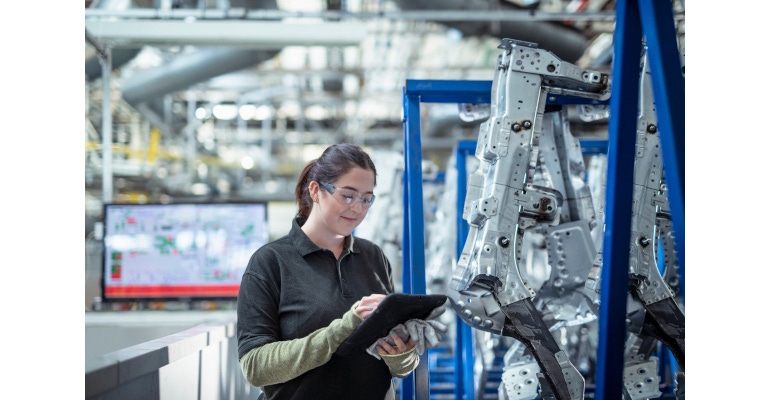Is your factory ready for the future?

Leaps and bounds in technological innovations will eventually find their way into industrial practices. Manufacturing processes, in particular, are in a state that crosses the limitations that used to be exclusive to science fiction. With the current momentum of computerization and information technology advancements, the rise of the digital factory is becoming more and more unstoppable. Here are four common factors that characterize digital factories.
Adaptability
Recent years have highlighted the importance of adaptability for companies to remain competitive even in uncertain times. For some organizations, the necessity to sustain operations has kickstarted efforts to accelerate their digital transformation.
Digital manufacturing technologies allow opportunities to become lean and maintain resiliency against uncertain market factors. For instance, incorporating robotics and artificial intelligence extends a facility's utilization hours through autonomous processes. On the other hand, a plant that heavily depends on manual operations can feel the impacts of any restrictions on workers' mobility.
Another improvement made with digital factories is the ease and efficiency of communication. Increasing connectivity with stakeholders lessens the dependency on physical limitations, such as geographical distance and transportation considerations. For example, a manufacturer can equip all assets throughout its vast facility to transmit information internally with a central repository that lends the data to analysis and evaluation. Externally, the facility can grant portions of its data to suppliers, customers, and service providers to communicate any requirements. The result is a reduction in the burden on the supply chain through integrated systems, even in situations that restrict conveyance.
The need to adapt to change brings manufacturers closer to exploring digitalization. While companies may utilize tools in creative ways, you will find a recurring theme revolving around staying competitive and keeping up.
Aiming for Efficiency
While companies will have varying approaches to digitalization, it is almost unanimous that manufacturers are aiming to realize efficiencies. A report shows that 98% of companies respond with efficiency gains as their primary reason for investing in digital technologies. Contributing factors to efficiency include improved planning, increased asset utilization, lower costs, and higher quality.
An arguably oversimplified definition of efficiency is getting more value for less input. Digital transformation enables efficient methods by working on both sides of the equation. It can improve the quality of a product, reduce the cost of production, or perform a series of steps to achieve both. In any case, automation easily comes to mind when discussing efficiencies in digital factories. It can cover anything from the physical process of manipulating raw materials into a finished product to eliminating the paper trail associated with administrative tasks.
Robots, for example, typically find themselves in various manufacturing automation applications such as assembly, machining, and quality inspection. Further enhancements, such as incorporating artificial intelligence, can enhance robots’ capabilities to optimize their actions. Other automation opportunities in a digital factory include the real-time diagnostic and predictive ability of maintenance systems. Installing sensors that pick up an asset's condition can automate planning, initiate work orders, and even prepare the required spares for servicing.
Enabling Technologies for Digital Factories
We have talked about some of the typical expectations manufacturers have when going digital. Regardless of the specific concern that a facility might have, a digital factory will aim for an improvement from its current status. However, expecting different results will require some form of change. A significant part of being considered a digital factory is acquiring the tools and technologies that enable process improvements.
A common focus among digital factories is gathering massive amounts of information. Going back to manufacturing maintenance as an example, modern facilities invest in devices that can collect information about different types of equipment. Sensors and other measuring devices can capture real-time data about the operating conditions of a machine. Of course, all the data in the world does not provide any usable value in itself. Data analysis is another essential part of the process that makes digital factories work. Building on the same example, programs such as computerized maintenance management software (CMMS) and enterprise asset management (EAM) organize and assess the large amounts of data available for more actionable maintenance insights based on a predictive or prescriptive strategy.
Working through the interconnectedness of things, digital technologies allow for limitless applications in manufacturing. However, the digital maturity of a facility is determined not only by the number of gadgets and programs used but by the way it utilizes these tools to realize value.
Culture of Digital Factories
Aside from the glamorous technological changes taking place in a digital factory, there is another integral part that is not as obvious. One of the most impactful differences between conventional and digital factories is the cultural change that transpires within the company.
With all the opportunities for automation and the countless processes that a robot can perform, the role of an individual becomes ever more valuable. Transitioning into a more-digital facility comes with varying needs and opens new opportunities. It is crucial to the overall success of a facility to recognize the potential it currently has with its workers and explore investing in upskilling its workforce.
Employee engagement and open communication lines go a long way in providing employee resources while meeting the immediate demands of a digital factory. Promoting a growth mindset along the journey is a healthy way to address gaps in skills and competencies.
Conclusion
Digital factories are becoming the norm in manufacturing as enabling technologies become more available than ever. While companies might have specific strategies and expectations for their operations, the underlying drivers for digital change display a striking resemblance to any efforts to be competitive in a thriving industry.
About the Author(s)
You May Also Like





